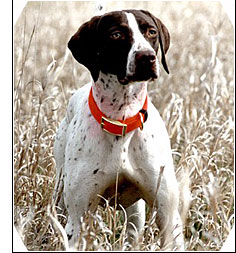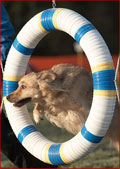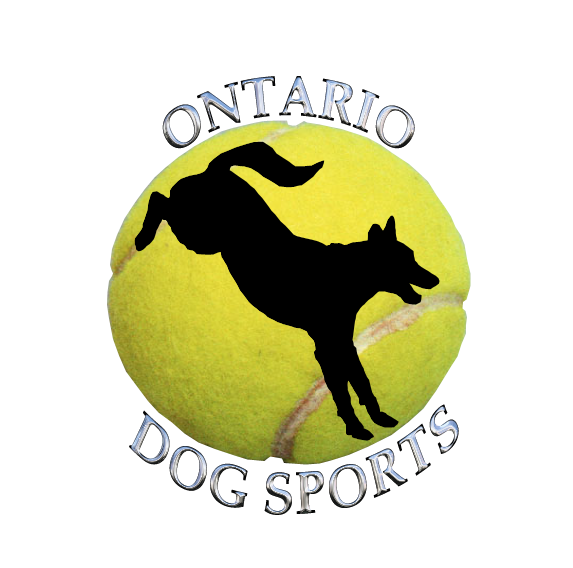Canine Athletes and Carbohydrate Management During Exercise
Arleigh Reynolds, DVM, PhD, DACVN
Jill Cline, PhD
The energy expenditure associated with the different activities ranges from extreme (Iditerod sled dogs) to minimal (recreational jogging with people). Though all dogs should be fed a complete and balance diet, some canine athletes require special nutrient management. For example, dogs that participate in activities such as sled dog racing, pack hound hunting, field trialing and working livestock will typically have increased energy requirements. These dogs, along with greyhounds, Flyball, Frisbee, search and rescue, military and police dogs may also have special requirements for carbohydrates post-exercise.
The Need for Carbohydrate Replenishment 
During the first two to five minutes of exercise, when running up a hill, or when short bursts of intense activity are required, glycogen is the primary fuel in dogs. Glycogen is made up of strings of 25 or fewer glucose molecules and is the storage form of glucose in the muscle and liver. However, glycogen stores are very limited in the body. Therefore, this is a critical fuel source that, when depleted, may affect a dogs ability to perform or exercise to the best of it’s capability. Studies in humans have shown that long distance runners have decreased speed and a perception of greater fatigue if their muscle glycogen is not repleted during multiple days of running. Likewise, dogs with low glycogen levels are anecdotally described as “not being fresh” or “losing focus” or “losing drive”. Canine athletes exercise most efficiently when they use free fatty acids as the primary fuel source. However, some glycogen is needed, especially during bouts of increased exercise intensity.
Recently, it was found that dogs which are exercised at 75-80 % VO2 max could only replace 65% of the pre-exercise levels of muscle glycogen within 24 hours when fed a normal food ration. This level of exercise intensity would be approximately equivalent to the amount of effort hunting fox hounds or sprint sled racing dogs would typically expend. Dogs that perform intense exercise, especially on successive days or successive times in one day, may require a supplemental carbohydrate source post-exercise to help them recover and replenish glycogen stores.
Normally, in a sedentary dog, insulin dictates the amount of glucose taken up by the muscle. However, during, and for a short period after exercise, the glucose transporter GLUT4 is externalized to the surface of the muscle cell to facilitate glucose uptake. This insulin-independent mechanism allows for rapid uptake of glucose to the cells where it can be used to restore glycogen reserves. This very important change in metabolism allows for the rapid repletion of glycogen to the muscle cells providing that there is enough circulating glucose available to be transported by GLUT4. The externalization of GLUT4 is triggered by exercise regardless of intensity. GLUT4 externalization generally lasts up to 30 minutes post exercise. Insulin dependant replenishment of glycogen is slower and may not fully replenish glycogen stores. Thus, optimum restoration of muscle glycogen must begin during the first 30 minutes after exercise.
Dogs that were administered a normal meal post strenuous exercise were unable to completely replenish muscle glycogen stores within 24 hrs. The dogs were only able to regenerate approximately 65% of the pre-exercise muscle glycogen stores. The disadvantage to this replenishment strategy is that dogs could potentially have compromised exercise performance because of low muscle glycogen if they were participating in events on successive days.
Methods of Carbohydrate Replenishment
Several schemes have been used to enhance glycogen replenishment in canine athletes. Simple carbohydrates like candy and sucrose seem convenient because they are easy to carry and deliver to the dog in the field. However, simple sugars are hydrophilic and can cause gastrointestinal upset. Therefore, either large amounts of water must be administered with the sugar or the body shifts large amounts of water from other tissues to the gut to hydrate the sugars. The end result can be osmotic diarrhea. In addition, the mobilization of water from the tissues to the gut can exacerbate dehydration. Hydration is always a concern in intensely exercised dogs, particularly in extreme heat or cold. Finally, simple sugars are so rapidly absorbed into the blood stream and taken up by cells that there can be a concomitant insulin spike and resulting rebound hypoglycemia.
Fructose, particularly honey has been a favorite carbohydrate replacement for canine athletes in the past. However, fructose must first be converted to glucose in the liver via gluconeogenic pathways. Therefore, not only does the dog expend energy processing the fructose, it is also difficult to process a significant quantity of fructose into glucose within the 30-minute window during which the GLUT4 transporters are externalized. Like sucrose, fructose is hydrophilic, may cause GI upset and possibly rebound hypoglycemia.
At the opposite end of the carbohydrate spectrum are complex carbohydrates like starches and whole grains. The main disadvantage of these carbohydrates is that they require significant amounts of time in order to be digested and absorbed, making it difficult for large amounts of glucose to be made available during exercise and up to 30 minutes after.
Recent research has shown that the most effective way to replenish carbohydrates in a canine athlete is through provision of modified starches called maltodextrins. Maltodextrins are 8-20 glucose units long, therefore, they fall between simple sugar and complex starches in structure. Maltodextrins are rapidly absorbed and taken up by the muscle without the insulin spikes or other associated GI problems attributed to other carbohydrate sources.
Several studies have examined the benefits of post-exercise maltodextrin supplementation in dogs that perform prolonged exercise. Dogs that were given 1.5-2.0 g carbohydrate/ kg body weight post-exercise in the form of maltodextrins were able to recover, on average, about 50% of pre-exercise glycogen stores within 4 hours of exercise and about 85 % of pre-exercise glycogen within 24 hours, while dogs fed but not supplemented recovered less than 40% of their pre-exercise glycogen after 24-hours
Further investigation examined the effect of a maltodextrin bar on plasma glucose levels-- an indicator of glucose availability. Dogs were either given a bar at the beginning and end of a 2-hour exercise period or were exercised without supplementation. Dogs treated with the maltodextrin bar had significantly higher blood glucose concentrations during exercise and up to 90 minutes after exercise when compared to the un-supplemented dogs, as well as compared to pre-exercise glucose levels. In addition, dogs supplemented with the maltodextrin bar only after exercise also had moderately elevated blood glucose levels within 15 minutes of administration . Elevated blood glucose indicates that substrate is available for muscle and liver glycogen repletion. These results indicate that maltodextrin supplementation enhances blood glucose concentration to support muscle function during exercise and muscle glycogen recovery.
Conclusions
The bulk of the research on carbohydrate replacement has occurred with dogs participating in exercise over 30 minutes in length; however, there is application in dogs that participate in primarily anaerobic activity as well. Anaerobic exercise relies mainly on muscle glycogen for fuel. For example, Greyhounds have significant depletion of muscle glycogen after a race. Also, dogs that may not be physically conditioned to perform in athletic events or exercise may benefit from maltodextrin supplementation for glycogen repletion. Untrained or poorly conditioned dogs, for example, a Labrador retriever at the beginning of hunting season, relies more heavily on carbohydrates as an energy source than a conditioned dog. Conditioned dogs rely on free fatty acids as their primary fuel source when performing exercise more than a few minutes in duration. However, any canine sport that requires sudden bursts of speed, or bouts of increased intensity could benefit from glycogen replacement post-exercise in conjunction with a regular balanced feeding regimen.
From:Purina Pro Club







 Ontario Dog Sports
Ontario Dog Sports
Reader Comments